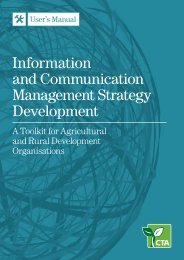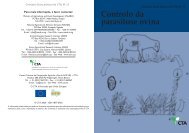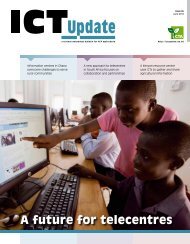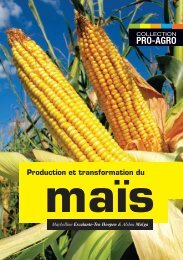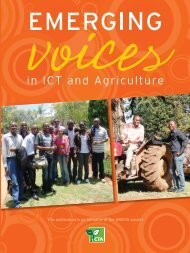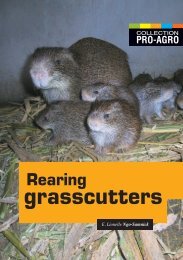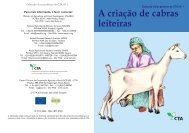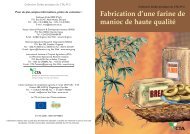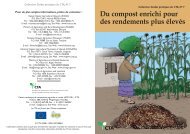Policy framework for Pastoralism in Africa
Policy framework for Pastoralism in Africa
Policy framework for Pastoralism in Africa
- No tags were found...
Create successful ePaper yourself
Turn your PDF publications into a flip-book with our unique Google optimized e-Paper software.
literacy <strong>in</strong> pastoral areas means that urban migrants are more likely to f<strong>in</strong>d employment <strong>in</strong> lowpay<strong>in</strong>g jobs, requir<strong>in</strong>g few skills and plac<strong>in</strong>g people at higher risk of exploitation. For people frompastoral backgrounds who do f<strong>in</strong>d work, remittances back to their families are an important sourceof <strong>in</strong>come.For those people rema<strong>in</strong><strong>in</strong>g <strong>in</strong> pastoralism, especially relatively wealthy pastoralists with largerherds, the growth of cities and towns provides economic opportunities. Such growth is usuallyassociated with an expand<strong>in</strong>g middle-<strong>in</strong>come population, and as <strong>in</strong>comes <strong>in</strong>crease, so does thedemand <strong>for</strong> livestock products such as meat and milk. Assum<strong>in</strong>g that basic <strong>in</strong>frastructure such asroad and mobile phone networks are <strong>in</strong> place, pastoralists can benefit from <strong>in</strong>creas<strong>in</strong>g demand <strong>for</strong>their products. Nor are urbanization trends restricted to <strong>Africa</strong>n countries. The ris<strong>in</strong>g export oflivestock from Somalia, Sudan and Ethiopia is partly driven by grow<strong>in</strong>g markets <strong>in</strong> the Gulf States,related to the expansion of cities and middle-<strong>in</strong>come populations <strong>in</strong> these countries.f) International migration and remittancesSome pastoral areas of <strong>Africa</strong>, especially those with long coastl<strong>in</strong>es, have a long history of outmigrationto f<strong>in</strong>d work overseas and send remittances home, dat<strong>in</strong>g back to the 1940s. Morerecently, major conflicts <strong>in</strong> some pastoral areas have led to large numbers of people flee<strong>in</strong>g violenceand persecution, with substantial <strong>for</strong>mal and <strong>in</strong><strong>for</strong>mal <strong>in</strong>ternational migration to European countries,the United States, Canada and elsewhere. These trends are beneficial <strong>in</strong> terms the f<strong>in</strong>ancialremittances, but also have implications because it is often the wealthier, educated and better-connectedpeople who migrate which to some extent, represents a <strong>for</strong>m of bra<strong>in</strong> dra<strong>in</strong> <strong>in</strong> terms ofentrepreneurial and education skills. In addition, there are the considerable social consequences ofthe permanent break-up of families.g) Counter-terrorism, organised crime and <strong>in</strong>securityThe terrorist attacks on the United States <strong>in</strong> September 2001 prompted changes to the <strong>for</strong>eignpolicies of the US and other countries, which <strong>in</strong> summary, shifted the objectives of developmentaid more towards the domestic security objectives of donor states. These changes had implications<strong>for</strong> aid programs <strong>in</strong> some pastoralist areas, because <strong>in</strong> some cases, these areas were perceived aseither harbour<strong>in</strong>g terrorists, or areas where disaffected youths were at risk of be<strong>in</strong>g recruited byterrorist or extreme religious groups. Some pastoralist areas witnessed a mix of aid programmesand direct ‘development’ <strong>in</strong>terventions of <strong>for</strong>eign military <strong>for</strong>ces, with the aim of <strong>in</strong>fluenc<strong>in</strong>g localpolitical allegiances.h) New and emerg<strong>in</strong>g diseasesGlobally, factors such as the <strong>in</strong>crease <strong>in</strong> <strong>in</strong>ternational travel, trade <strong>in</strong> agricultural commodities, <strong>in</strong>tensificationof livestock production systems, urbanization and population growth, climate change, andconflict have led to concerns over the risks from new or emerg<strong>in</strong>g pandemic diseases. The HIV/AIDSpandemic is evidence that new disease can <strong>in</strong>deed appear and spread rapidly, while avian flu has hada far lower impact on human health but cont<strong>in</strong>ues to receive much <strong>in</strong>ternational attention. So far,pastoral areas have probably been less affected by HIV/AIDS than other, more densely populated areas,but statistics on prevalence are limited. With grow<strong>in</strong>g urban migration, trade and road networks, therisks to pastoralists are clear, and yet these areas usually have very weak health services.28 <strong>Policy</strong> <strong>framework</strong> <strong>for</strong> <strong>Pastoralism</strong> <strong>in</strong> <strong>Africa</strong>




